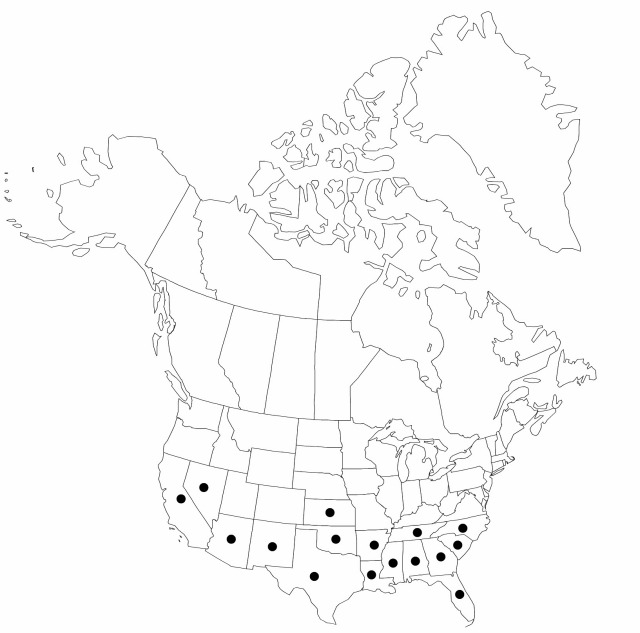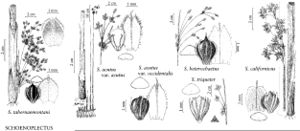Schoenoplectus californicus
Cas. Nár. Mus., Odd. Prír. 140: 127. 1972.
Rhizomes 10–15 mm diam. Culms bluntly trigonous with nearly flat sides throughout to cylindric proximally, obscurely trigonous distally, 1–4 m × 4–10 mm, smooth. Leaves 3–4, basal, ca. 1/6 culm length; sheath fronts coarsely pinnate-fibrillose; blades 0–1, dorsiventrally flat, not more than 1/2 sheath length, distal blade to 20 × 2 mm. Inflorescences 3 or more times branched, branches to 21 cm; proximal bract usually erect, obtusely trigonous to subcylindric-channeled, 1–8 cm, margins often scabridulous. Spikelets 25–150+, solitary and in clusters of 2 or more, 5–11 × 3 mm; scales orange-brown, brightly lineolate-spotted, broadly oval, 2.5 × 2 mm, margins ciliolate, flanks veinless, apex rounded, notch 0.1–0.2 mm deep, awn not contorted, usually bent outward, 0.3 mm, sparsely scabrous. Flowers: perianth members 2–4, dark red-brown, thickly strap-shaped or trigonous, equaling achenes, fringed with brownish, soft, blunt hairs; anthers 1.5 mm; styles 2-fid. Achenes dark gray-brown when ripe, unequally biconvex or plano-convex, ovoid to obovoid, 1.8–2.2 × 1.3 mm; beak 0.2 mm. 2n = 68.
Phenology: Fruiting spring–summer.
Habitat: Brackish to fresh marshes, shores, often emergent in water
Elevation: 0–1400 m
Distribution

Introduced; Ala., Ariz., Ark., Calif., Fla., Ga., Kans., La., Miss., Nev., N.Mex., N.C., Okla., S.C., Tenn., Tex., Mexico, West Indies, Central America, South America (s to Argentina, Chile), Pacific Islands (Cook Islands, Easter Island, Hawaii), New Zealand.
Discussion
Schoenoplectus californicus forms sterile hybrids with S. acutus in California (see 1. S. tabernaemontani) (S. G. Smith 1995). It reportedly occurs in Pope County, Illinois, although I have not seen a specimen.
Selected References
None.
